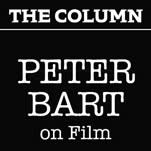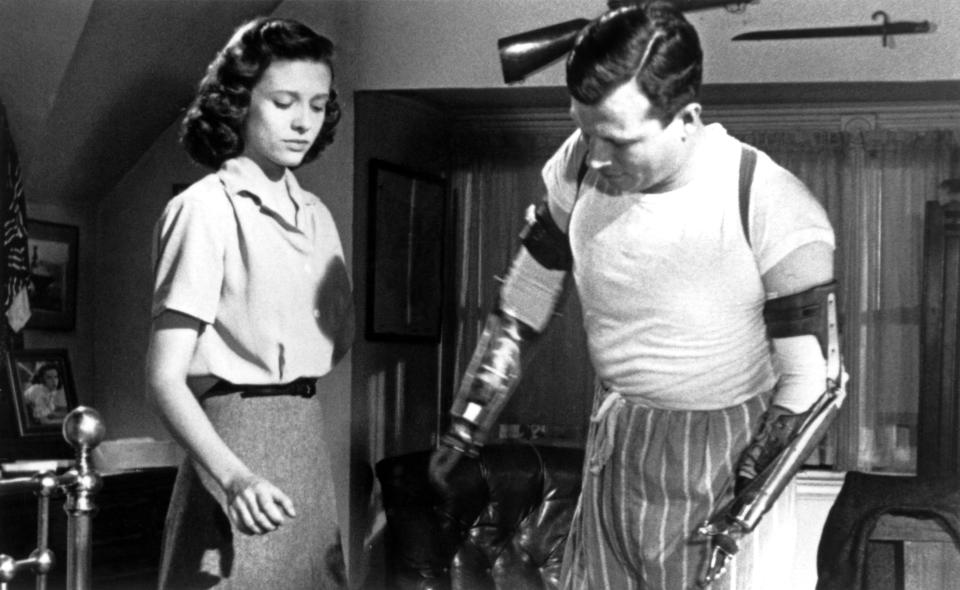Peter Bart: ‘Top Gun: Maverick’ Revived Box Office, But Faceless Villains & Formulaic Plot Pale Compared To Great War Films Like ‘The Best Years Of Our Lives’
- Oops!Something went wrong.Please try again later.
- Oops!Something went wrong.Please try again later.
- Oops!Something went wrong.Please try again later.
- Oops!Something went wrong.Please try again later.
- Oops!Something went wrong.Please try again later.

Having paid my $8.50 to see Top Gun: Maverick last weekend, my local cineplex inadvertently improved my appreciation of the film. For three minutes the sound clicked off and, minus dialogue, I was instantly caught up in the soaring jets, hyper-caffeinated cast and the durable charisma of its star. Then sound returned, the story unfolded and reality set in: This is not really a plot but a superbly crafted business plan, half video game and half military recruitment film. It’s the perfect structure for a Tom Cruise genre-bashing blockbuster.

More from Deadline
'Top Gun: Maverick' Crossing $200M Today; Flies Past 1986 Movie & 'Mission: Impossible' - Box Office
Historians may ultimately cite the movie as a turning point — the film that reignited audiences, young and old, to pay homage to their movie palaces. FiIm critics may also single out the Top Gun sequel as a defiant reinvention of the classic war genre.
Does it measure up to the classics? Sure it does, but only Cruise would set out to design a combat epic that lacked a specific enemy and hence a focused rooting interest. Or that marginalized jeopardy, sex and even gore – all the stuff that’s characterized war films going back to Paths of Glory.
War movies are built around a mission, and Cruise’s is to train two teams of F-18 pilots to steer through mountainous terrain and take out a uranium enrichment facility (we don’t know whose). Will Cruise survive the attacks of those anonymous jet pilots swerving towards him? Will he and his students face challenges beyond the intense stripped-to-the-waist football games played on a serene beach?
Sure they will. But the release date of Top Gun: Maverick also coincided with publication of a new book reminding us once again of the “classic” approach to war movies — in this case, a film titled The Best Years of Our Lives. The driving force behind it was Samuel Goldwyn, a legendary independent producer who, personally and professionally, represented the polar opposite of Cruise.
In 1944, Goldwyn was weary both of war and war movies, but fascinated by the traumas faced by returning veterans trying to re-assimilate into small-town America. The war had essentially destroyed them. In nurturing his project, Goldwyn took the steps mandated for filmmakers of that era: He bought the film rights to a bestselling novel titled Glory For Me by MacKinley Kantor. He then paid Kantor to write a screenplay, despite the fact that his novel had been written in blank verse.
Disappointed by the outcome, Goldwyn next approached an accomplished playwright, Robert E. Sherwood, to do a rewrite under the supervision of the distinguished filmmaker William Wyler (Roman Holiday). The new script was exemplary, if somewhat literary. But even as Best Years was in pre-production, Goldwyn was in talks with stars like Fredric March, Dana Andrews and Myrna Loy, warning them that they would be playing characters who were desperately damaged, even suicidal. One recruit was Harold Russell, whose actual war injury left him wearing hooks in the movie where his hands had been.

Everett
Stubborn and iconoclastic, Goldwyn ignored rumors that his film would be too dark for filmgoers. Joseph Breen, the prudish chief of the Production Code, decreed that the first cut of the movie was also too sexy; he even timed the kissing scenes with a stopwatch.
Their apprehensions proved false: The film became a critical and box office hit, winning seven Oscars including Best Picture (its impact is detailed in Alison Macor’s new book, titled Making The Best Years of Our Lives).
Almost a century later, to be sure, Tom Cruise would pursue a vastly different course in developing his film. There would be no bestselling novel; no distinguished playwright. Several layers of writers were called upon to contribute to Maverick: Credits list five who based their work on characters created by two other writers who in turn were “inspired” by real-life individuals introduced in a 1982 magazine article.
The final product had to pass muster not only with the code (or its contemporary equivalent) but also with the tough Media Office of the Department of Defense.
Resolution of geopolitical issues remain more ambiguous. China’s censors, always prickly about war movies, have not as yet either approved or rejected Cruise’s blockbuster, while Tencent, a major Chinese financier, quietly backed out of its important financial commitment early in production.
So has the movie worked? It’s been scoring robustly on charts reflecting audience and critical acceptance. Critics by and large are paying obeisance to Cruise’s formidable skills as a filmmaker. But as John Anderson wrote in the Wall Street Journal, the movie compounds his worries “about where movies are going and the lack of creativity making its way on screen.”
In a Cruise movie, war is an exercise in detached exhilaration. It is not an ominous prelude to Best Years. At one moment in Top Gun: Maverick, a superior officer studies Cruise’s confident grin and says, “I don’t like that look.” To which Cruise responds: “It’s the only one I got.”
“The look” will be good enough to satisfy millions of ticket buyers.
Best of Deadline
2022-23 Awards Season Calendar - Dates For The Oscars, Emmys, Tonys, Guilds, Festivals & More
NFL 2022 Schedule: Primetime TV Games, Thanksgiving Menu, Christmas Tripleheader & More
Sign up for Deadline's Newsletter. For the latest news, follow us on Facebook, Twitter, and Instagram.

